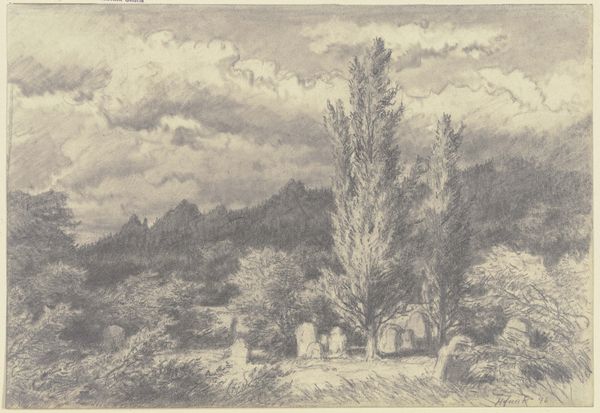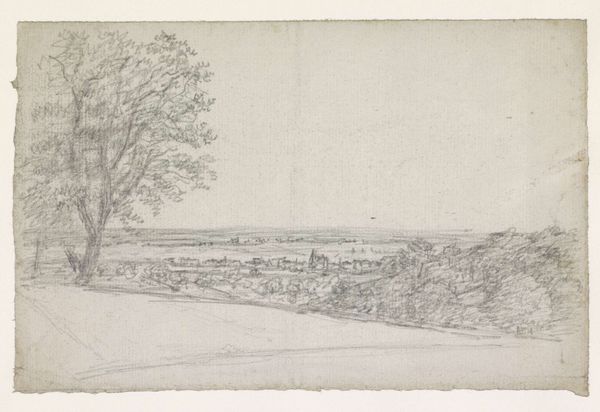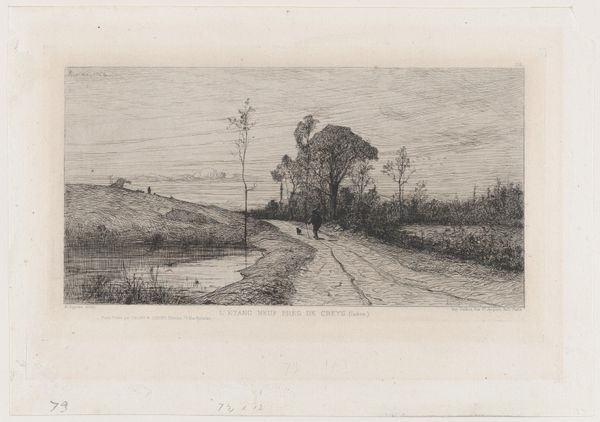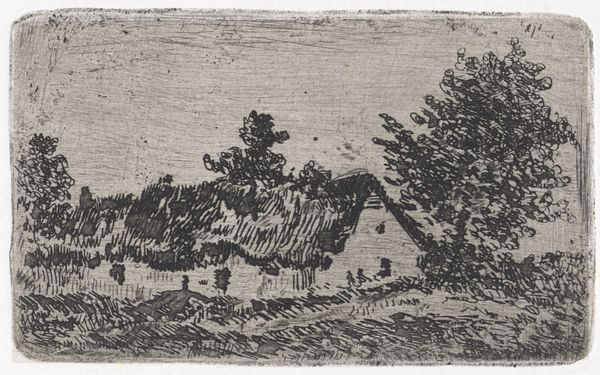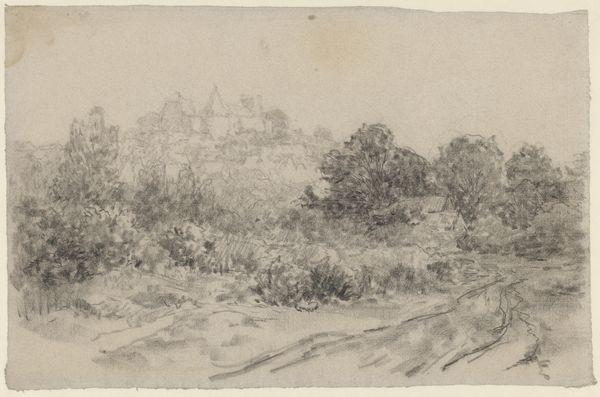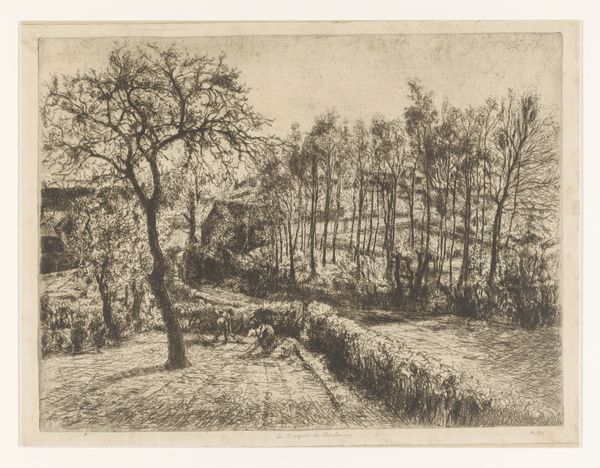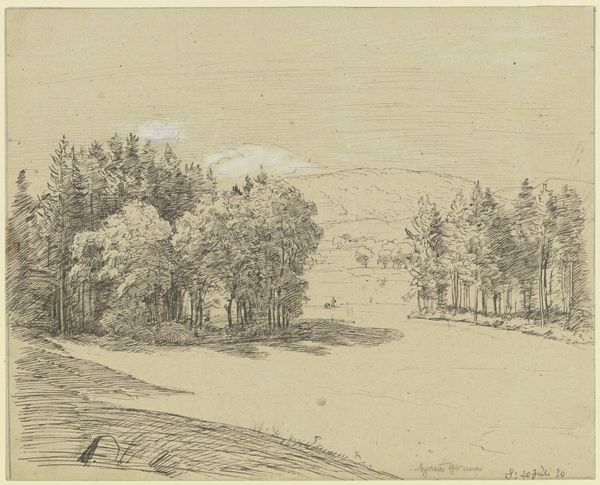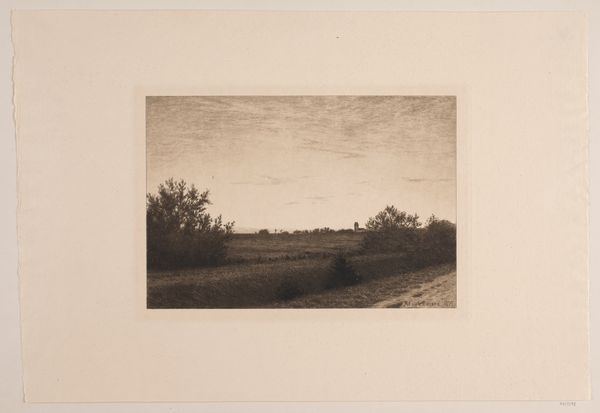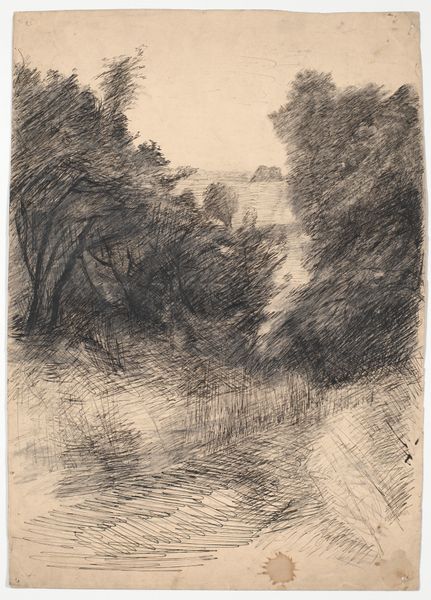
drawing, pencil
#
drawing
#
landscape
#
romanticism
#
pencil
#
realism
Dimensions: 15 3/4 x 22 7/16 in. (40 x 57 cm)
Copyright: Public Domain
Editor: This is Eugène Boudin's "Landscape," created around 1850, a pencil drawing currently residing at the Metropolitan Museum of Art. It strikes me how the artist captures a kind of pre-industrial world here... the emphasis seems to be on the physical environment, rather than the structures. What do you see when you look at this drawing? Curator: For me, it’s about the means of production itself. The very act of taking pencil to paper and rendering this landscape tells a story about labor. Think about the industrial revolution at the time and how drawing these scenes becomes a direct record of life. Boudin is choosing to document a rural life, contrasting sharply with urban, industrial centers. What significance might that choice have, considering the rise of mass production? Editor: I guess that even this drawing, then, is implicated in consumption. It becomes something someone might purchase, or collect, to think back on their childhood on the countryside. Does the medium – the pencil itself – influence that understanding, for you? Curator: Absolutely. The pencil, a readily available and relatively inexpensive tool, allows Boudin to create art accessible to a broader audience. Consider the physical process. The layering of graphite on paper, creating depth and texture, mimics the accumulation of experience, the growth of the very landscape represented. Do you see parallels between his technique and his subject matter? Editor: That’s fascinating! I never thought about it in that way, about how his art reflects the processes involved in both labor and nature. Curator: It shifts our understanding, doesn’t it? Rather than simply appreciating the romantic beauty, we are confronted with the underlying socio-economic forces at play in both the production of the artwork, and within the very scene represented. Editor: Yes, exactly! Thank you for highlighting that—it definitely encourages me to consider art making through the lens of materiality and labor, more intentionally now. Curator: My pleasure! Hopefully, it enables all of us to see even familiar landscapes in a different light, so to speak.
Comments
No comments
Be the first to comment and join the conversation on the ultimate creative platform.
